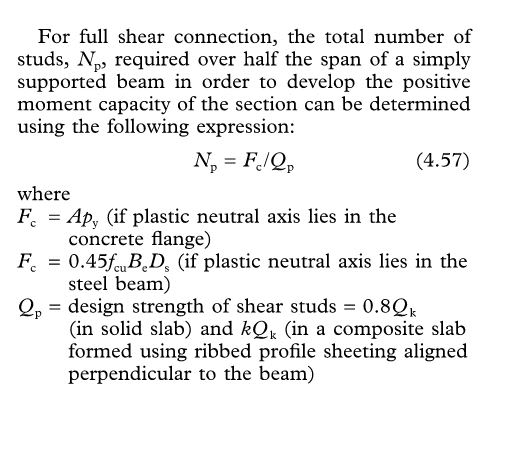Enhineyero
Structural
- Sep 1, 2011
- 285
Hi All, I started a thread last year about shear stud design for composite steel beams (thread507-485849). It didn't get a lot of response and wish to revisit it.
Based on engineering principles when two or more sections are joined together to act as one, the connection joining the sections shall be checked for horizontal shear force (VQ/Ib).
Curious to know why for composite steel beams the design of shear stud is dependent on flange axial force due to bending (F = Ac x 0.4fuc) instead of horizontal shear force.

Based on engineering principles when two or more sections are joined together to act as one, the connection joining the sections shall be checked for horizontal shear force (VQ/Ib).
Curious to know why for composite steel beams the design of shear stud is dependent on flange axial force due to bending (F = Ac x 0.4fuc) instead of horizontal shear force.

